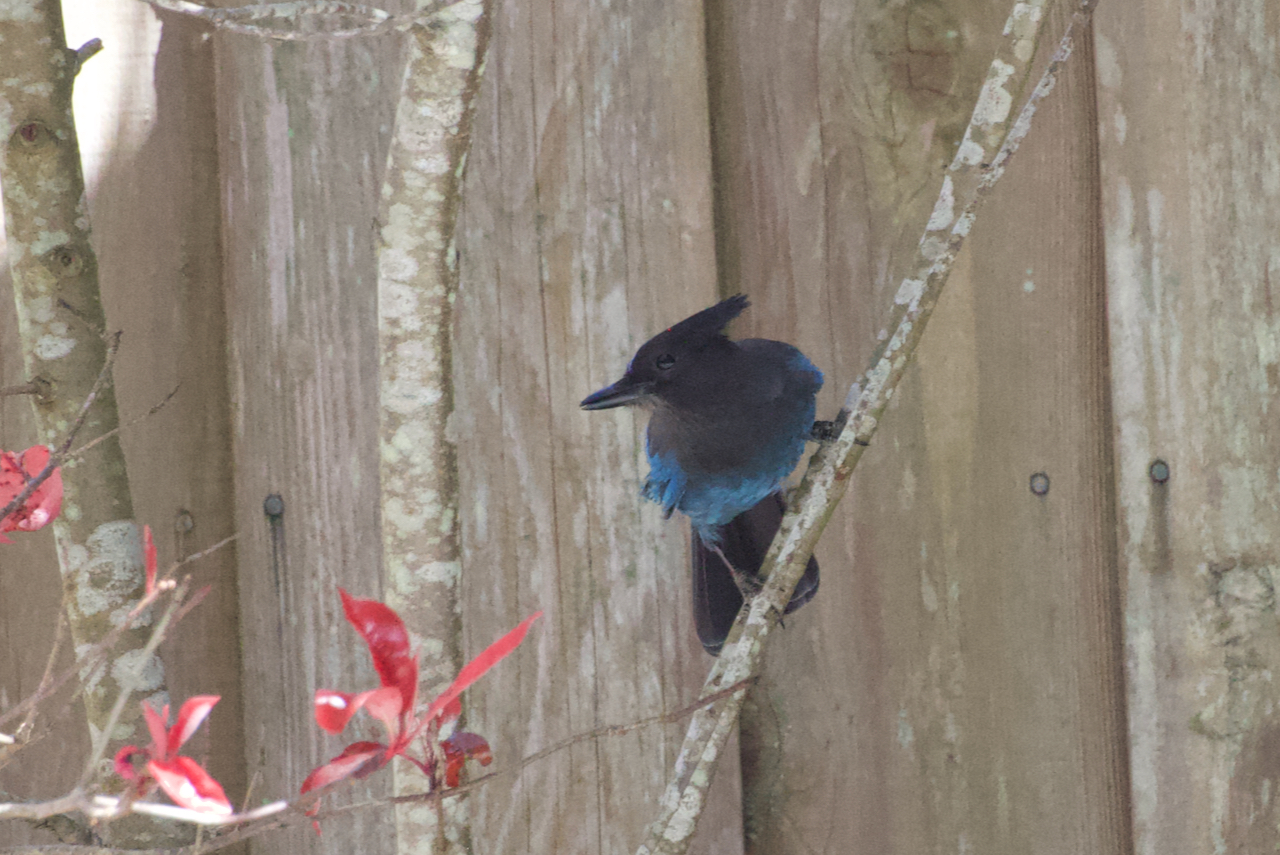
A small bird with a big belly, covered in short blue-gray feathers with hardly a tail to speak of, a pair of big eyes and an impressive pinkish mouth, with a really splendid gravelly voice – this young Steller’s Jay (Cyanocitta stelleri) was found alone on the ground in an alley in Eureka and picked up by a kind member of the public.
Upon examination at our clinic, the little Jay was found to be in good health with no injuries. The only thing we were concerned about was the welfare of the family. The rescuer had wondered if the parents had been killed. The best thing to do would be to return to the site and look for the baby’s family, and if possible, attempt to reunite them with their parents. If no parents were found, the baby would come back to HWCC to be raised as an orphan until they could take care of themselves in the wild.
Like most parents, Steller’s Jays don’t abandon their babies. But tragedy can occur in a world full of cars, cats, windows, and natural predators – we treat nearly 200 orphaned songbirds each year!
We followed the address deep into Eureka, armed with binoculars and carrying the baby in a box lined with a soft pillowcase. We arrived at the site and proceeded to watch for Jays.



If we can determine that the baby and parents are aware of each other and in communication, the family will be considered reunited. We stand back to observe, keeping a close eye on the baby.




It’s awesome that this Jay’s mother and father were still present and that the youngster could return to their family. Of course, many young birds are actually orphaned and do need our care. While you can read on the internet that intervention may be the wrong thing, and that if you don’t know, you shouldn’t act, we can easily turn this reasoning around. In many cases we might not know enough to not act. To decide to do nothing might have consigned this wild animal to a needless death. The kind-hearted people who brought us the baby Jay were not able to tell that the baby wasn’t alone. They observed for a considerable time but didn’t see anything to allay their fears. This is perfectly fine! They aren’t professionals. They did the right thing. They called our clinic and told us what they’d seen. WIth no parents observed and the bird in the middle of an alley, with possible injuries, we suggested that they bring the baby to us. In this way we all played our part in helping protect this bird and gave them a second chance.
Want to help us provide the kind of care and attention that all wild neighbors in need deserve? Please consider donating! Your generosity is what makes our work possible. Without you there would be no one to call, no one to intervene, and no one to make sure that fledglings who’ve wandered far from home will get the attention and care they deserve. Thank you!!!


